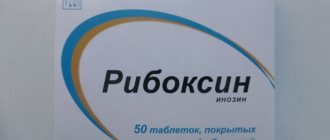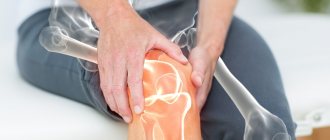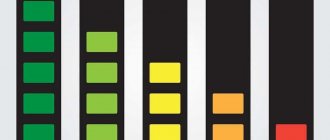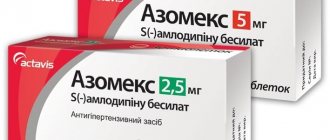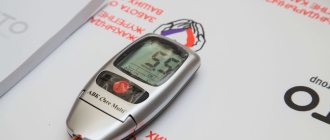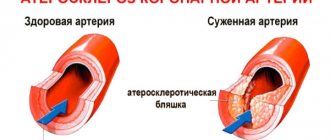What is Riboxin
A drug based on inosine, a precursor of adenosine triphosphate. Regulates blood circulation, absorption of glucose by cells, restores nutrition to the myocardium. Several pharmaceutical forms of Riboxin are produced:
- tablets: yellow, coated, contain 200 mg of active substance, packaged in cell blisters, packed in 10–50 pcs.;
- Riboxin Lect: soft gelatin capsules containing 200 mg of inosine, up to 50 pcs. in one package;
- 2% solution for parenteral administration: a clear, water-based liquid in ampoules of 5–10 ml, used for injection.
Oral medications contain starch, gelatin, sucrose, glycerin and other formative substances.
Compound
1 tablet of the pharmaceutical product contains:
- Riboxin – 0.2 g;
- Calcium stearate;
- Potato starch;
- Powdered sugar;
- Opadry II Yellow coating mixture - Indigo carmine (E 132), Lactose monohydrate, Titanium dioxide (E 171), Macrogol (polyethylene glycol 3000), Quinoline yellow (E 104), Iron oxide (E 172).
Composition of solution for injection:
- inosine – 20 mg/ml.
How does Riboxin work?
Inosine in all types of the drug has systemic effectiveness. It restores metabolism, helps the body adapt to work in conditions of insufficient oxygen supply. The medicine eliminates and prevents the occurrence of arrhythmia in chronic vascular diseases. Regular use helps normalize myocardial contractility and reduce ischemic disorders.
The therapeutic effect increases with the course of taking the drug. In the blood, inosine actively stimulates tissue metabolism, ATP production, smoothes out the manifestations of bradycardia, tachycardia, increases the force of contraction of the heart muscle and promotes better relaxation.
Riboxin has a moderate antiplatelet effect: it improves blood fluidity and prevents platelet aggregation. Another therapeutic effect of the drug is biostimulating. The medicine accelerates the regeneration of muscle fiber cells and mucous membranes.
Side effects
As a rule, the medicine is well tolerated, only in isolated cases the following side effects are observed:
- Arterial hypotension;
- Increased levels of uric acid and its salts in the blood;
- Tachycardia;
- Itchy skin;
- General weakness;
- Exacerbation of gout;
- Urticaria of allergic origin;
- Redness of the skin.
For what diseases is Riboxin used?
The main area of medicine in which the drug is in demand is cardiology. Riboxin is prescribed:
- for coronary insufficiency, angina pectoris, and other manifestations of cardiac ischemia;
- to relieve disorders in patients after a heart attack;
- in case of intoxication with cardiac glycosides;
- for cardiac arrhythmias of various origins;
- with dystrophic changes in the myocardium due to physical exhaustion, endocrine pathologies.
In the complex treatment of diseases of internal organs, Riboxin is used due to its regenerating and metabolic effects. Main indications:
- liver damage: hepatosis, hepatitis, cirrhosis;
- gastric ulcer, erosive changes in the intestinal mucosa;
- open-angle glaucoma with stable intraocular pressure;
- pathological conditions after radiation and chemotherapy.
Interaction
The combined use of a drug with cardiac glycosides enhances the inotropic effect of the latter and prevents the development of such adverse consequences of drug treatment as the occurrence of arrhythmia, for which Riboxin is sometimes prescribed together with this group of pharmaceuticals.
Simultaneous use of Riboxin with anticoagulants such as heparin increases the duration of their therapeutic action.
The drug is completely incompatible with acids and alcohols , pyridoxine hydrochloride or vitamin B6 , since both chemical compounds are deactivated, salts of heavy metals , and plant alkaloids . The latter, when interacting with Riboxin, form insoluble and non-removable compounds due to the detachment of the alkaloid base.
Is Riboxin allowed for pregnant women?
Expectant mothers need more nutrients, the absorption of which is questionable due to hypoxic disorders. In this situation, Riboxin improves metabolism, ensures better energy exchange, eliminates the effects of oxygen starvation, and prevents the development of cardiac complications.
Riboxin injections are used more often than tablets as a faster way to deliver medicine into the blood. The drug is administered orally to pregnant women, usually at home, according to an individual dosage regimen.
Pharmacodynamics and pharmacokinetics
When taken orally, Riboxin is well and almost completely absorbed from the gastrointestinal tract. When administered intravenously, the pharmaceutical drug is quickly distributed into tissues that need ATP. Regardless of the route of administration, unused active ingredients are metabolized in the liver, where the final stages of metabolic biochemical reactions take place. A small amount of Riboxin is excreted in urine, feces and bile.
Introduction
According to the decision of a working meeting of the Austrian Society of Urology (1994), the changes in the body of men that occur as a result of testosterone deficiency were proposed to be called “ partial androgen deficiency in older men
,” or
PADAM syndrome (partial androgen deficiency in aging males).
But in domestic medicine, they are increasingly inclined to the term “
age-related androgen deficiency
” or “
age-related hypogonadism
”.
Age-related androgen deficiency
is a condition caused by an age-related decrease in the secretion of testosterone in Leydig cells. Recently, there has been extraordinary interest in this problem, associated primarily with the widespread prevalence of age-related hypogonadism. It is generally accepted that as men age, there is a gradual decrease in the level of sex hormones, the onset of which occurs between 30 and 40 years. It is known that from 40 to 50 years old, approximately 7% of men suffer from hypogonadism, from 60 to 80 years old - 20%, over 80 years old - already 35%. According to the results of numerous studies conducted in the USA, androgen deficiency is observed in almost 5 million men, and only 5% of them receive hormone replacement therapy. In addition, it has been shown that a decrease or absence of sexual function affects not only the quality of life, but also affects its duration. It is known that the main male sex hormone, which is responsible for the health and activity of a man throughout his life, is testosterone. Together with dihydrotestosterone, androstenedione and their metabolites, it creates the appropriate tone of the central nervous system, subcortical formations, centers of the autonomic nervous system, supporting the functional activity of the gonads and providing copulatory function. Testosterone, along with androgenic effects, can also have a powerful anabolic effect on various human tissues. It is not in vain that at the National Congress “Man and Medicine” (2006, Moscow), corresponding member of the Russian Academy of Medical Sciences O.B. Laurent said: “Changes in testosterone levels affect adenopituitary regulation in general, causing not only a decrease in creative potential, changes in emotionality, sexual activity, but also negatively affects mineral and carbohydrate metabolism, so androgen deficiency is a problem that unites doctors of many specialties.” One of the pressing problems, often combined with age-related androgen deficiency in men, is the presence of various concomitant diseases and, above all, type 2 diabetes mellitus. Diabetes mellitus is one of the most common chronic diseases and has a strong upward trend. Every year the number of patients increases by 6-7%, and by now it affects 2-4% of the population. According to official statistics from the Ministry of Health of the Russian Federation, more than 2 million people suffer from diabetes in our country, and up to 200 thousand new cases of this disease are registered annually. Approximately 88% of cases are type 2 diabetes. And the prevalence of androgen deficiency in these patients reaches 65%. Thus, almost every second patient with sexual dysfunction also suffers from type 2 diabetes. The most accurate data regarding the prevalence of sexual dysfunction in the general population and among patients with diabetes were obtained from the results of the long-term Massachusetts Study of Aging Men (1994) and the work of Vinik and Richardson. The results of the first study showed a relationship between levels of free testosterone, sex steroid binding globulin (SHBG), and the risk of developing insulin resistance and type 2 diabetes. With a decrease in free testosterone levels by 1 standard deviation (3.9 ng/dL), the risk of developing type 2 diabetes is 1.58, and with a decrease in SHBG by 1 standard deviation (15.8 nmol/L) – 1.89. According to a second study, testosterone levels in patients with type 2 diabetes are 10-15% lower than in people of the same age groups without diabetes. In addition, androgen deficiency in men closely correlates with the presence of insulin resistance and hyperinsulinemia, and the administration of testosterone drugs leads to their reduction. It is interesting to note that, according to the Scientific Research Center of the Russian Academy of Medical Sciences, testosterone levels in patients with type 2 diabetes mellitus on insulin therapy remain within normal values, in contrast to patients receiving oral hypoglycemic drugs (Kalinchenko S.Yu., Kozlov G.I. ,2003). Therefore, the influence of insulin on testosterone production in Leydig cells cannot be excluded. It has also been convincingly proven that the low level of free and total testosterone observed in type 2 diabetes mellitus, especially in obese patients, is not associated with the degree of diabetes decompensation. It is believed that the first reason for the development of age-related hypogonadism is probably a decrease in the number of Leydig cells due to a deterioration in the blood supply to the testicular tissue and a decrease in the number of receptors for luteinizing hormone on their surface. The second possible cause of androgen deficiency in obese patients with type 2 diabetes mellitus is the abdominal type of obesity, usually combined with this disease. There is now extensive evidence supporting the relationship between visceral obesity and decreased testosterone levels in men. Adipose tissue has an “affinity” for steroid hormones. Aromatase in adipose tissue in increased quantities converts androgens (testosterone and androstenedione) into estrogens, which suppress the secretion of both gonadotropin-releasing hormone and luteinizing hormone, which leads to a decrease in blood testosterone levels. In addition, the cause of androgen deficiency in obesity is leptin produced by white adipose tissue, which stimulates the secretion of gonadotropin-releasing hormone. It is believed that some resistance of central structures to leptin in obese patients leads to disruption of the rhythm of gonadotropin-releasing hormone secretion, which may be another reason for the development of hypogonadotropic hypogonadism.
special instructions
Riboxin in bodybuilding
The pharmaceutical drug is classified as a metabolic agent and biochemical stimulant, so the drug can be used to gain weight , improve physical performance and increase strength . Riboxin was actively used in sports back in the 70s. The following types of nutrition for bodybuilders are known, which are actively sold to this day:
- Premium Inosine;
- Ultimate nutrition;
- Inosine mega-pro;
- Inosine life extension;
- Cell-tech hardcore.
How to take Riboxin for bodybuilding?
In sports nutrition, a tablet form of the drug is used, which is administered orally before meals. The dosage ranges from 1.5 to 2.5 g per day. As for therapeutic purposes, the number of tablets taken should be gradually increased from a starting dosage of 0.6-0.8 g 3-4 times a day to 2.5 g. Riboxin for athletes should be used for 4 weeks to 1.5 -3 months.
To enhance the effect of the drug on the myocardium and reduce the period of mid-mountain and climatic adaptation, Potassium orotate and Riboxin can be used together. In this case, the dosage of the potassium salt of orotic acid is 0.25-0.5 g 2-3 times a day before meals (course duration is 15-30 days), and Riboxin is used according to the above scheme.
Riboxin in veterinary practice
The drug is non-specific in its pharmaceutical nature, therefore it can also be used in veterinary therapeutic practice. Often the drug is used for dogs to eliminate heart failure , treat myocarditis and endocarditis , improve the metabolic abilities of the muscular organ with myocardosis and heart defects , which are very common senile problems in animals.
How should animals take Riboxin?
As a rule, the drug is administered intramuscularly , because this is the most rational route of administration in veterinary practice. The dosage is 0.1-0.2 g of the drug per 10 kg of animal weight 3 times a day. The course of conservative treatment lasts about a month. Repeated prescriptions of Riboxin are possible for a more thorough correction of metabolism or elimination of deep degenerative changes.
Atrial fibrillation is usually divided into the following forms:
1.According to development mechanisms;
A. atrial fibrillation B. atrial flutter:
- correct form
- irregular shape
2.By heart rate (HR);
- tachysystolic (heart rate 90-100 per minute and above)
- bradysystolic (heart rate 60 per minute and below)
- normosystolic (heart rate 60-80 per minute)
3. According to the frequency of occurrence of arrhythmia;
- paroxysmal (occurring periodically, each such paroxysm (episode of arrhythmia) lasts no more than 7 days and often goes away on its own, sometimes requiring the use of special medications to restore the rhythm)
- persistent (lasts more than 7 days and requires active rhythm restoration)
- permanent (lasts more than a year and an attempt may be made to restore the rhythm)
- constant (lasts more than a year, rhythm restoration is not indicated due to its ineffectiveness)
Naturally, all these forms are combined with each other. For example, the diagnosis may indicate a paroxysmal tachysystolic form of atrial fibrillation, an increase in paroxysms.
Testosterone replacement therapy
In the treatment of age-related hypogonadism, the main role belongs to therapy, the purpose of which is to normalize the content of testosterone in the blood plasma. This treatment is aimed at improving the sexual function and general well-being of a man. With long-term treatment (more than one year), other positive effects are noted: a significant increase in bone tissue density, a decrease in the volume of both subcutaneous and visceral fat, an increase in muscle mass and strength, a decrease in the level of atherogenic lipids, an increase in insulin sensitivity, etc. Currently Currently, the pharmaceutical market offers a fairly wide range of testosterone preparations for hormone replacement therapy, differing from each other in the route of administration, duration of action and number of side effects. Among testosterone preparations intended for cutaneous use, the most modern are testosterone gels. Preparations from this group are applied to clean and dry skin of the shoulders, forearms or anterior abdominal wall, rubbed in a thin layer until completely dry for at least 3-5 minutes. before getting dressed. After 2-3 days from the start of treatment, the skin becomes saturated with the gel and a balance arises between the adsorption of testosterone and its removal from the body. The constant, uniform release of testosterone through the skin prevents significant fluctuations in its serum levels. An equally important circumstance is the preservation of the circadian daily rhythm of testosterone concentration in a man’s body.
